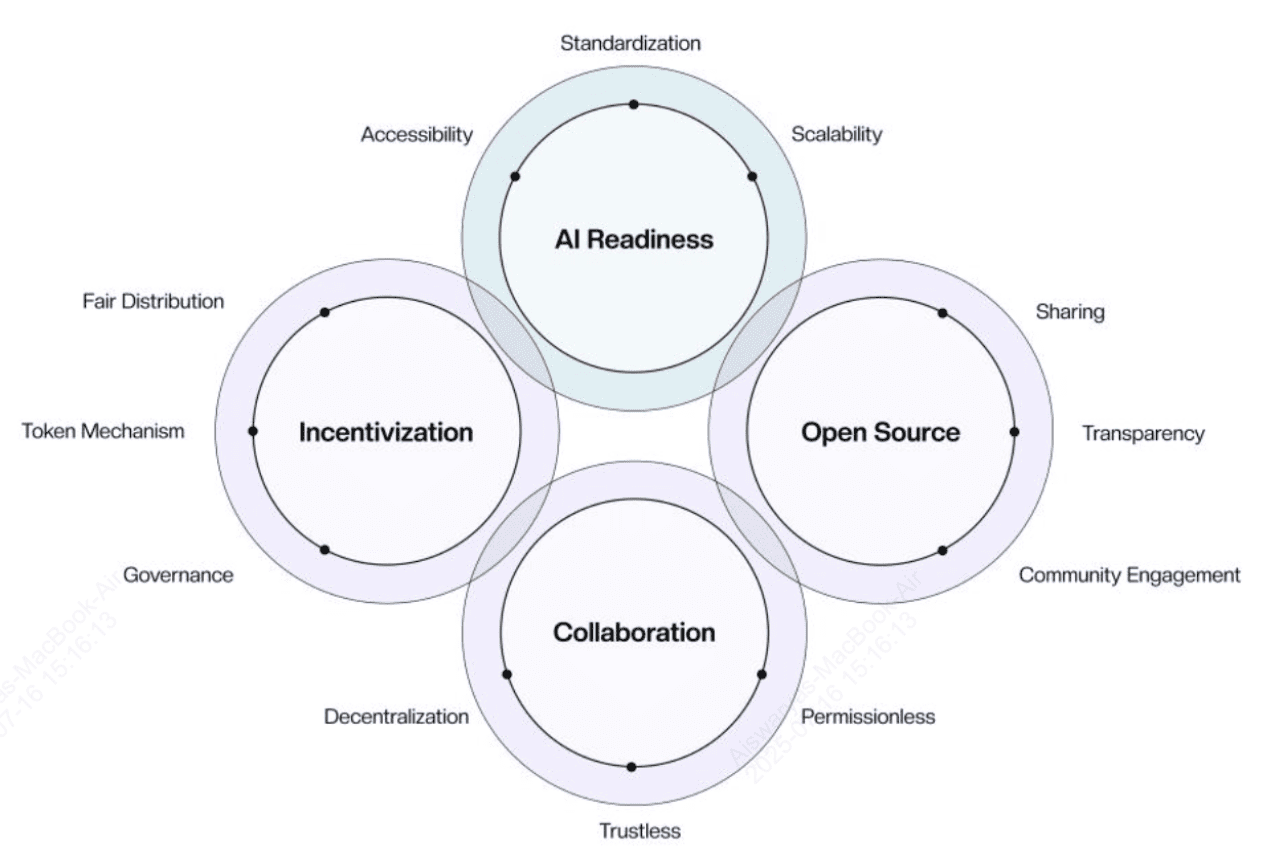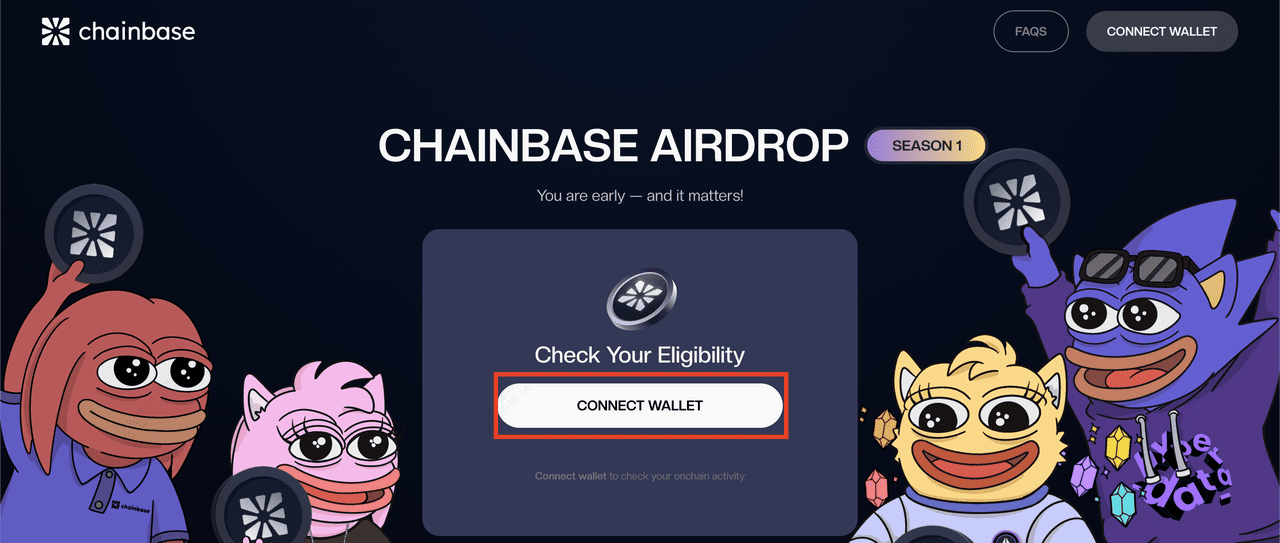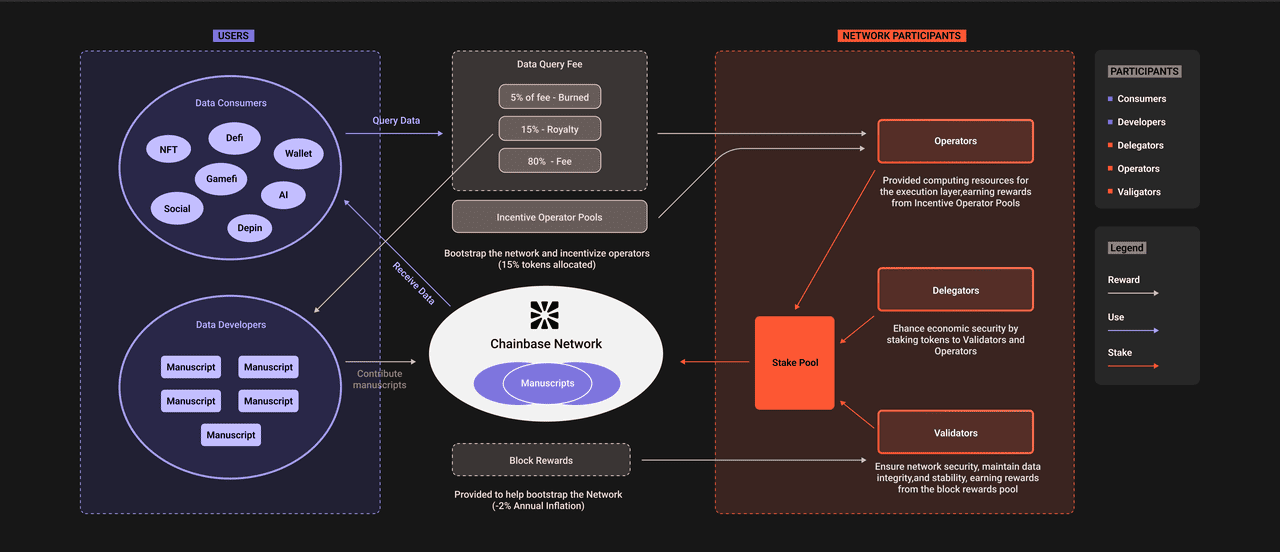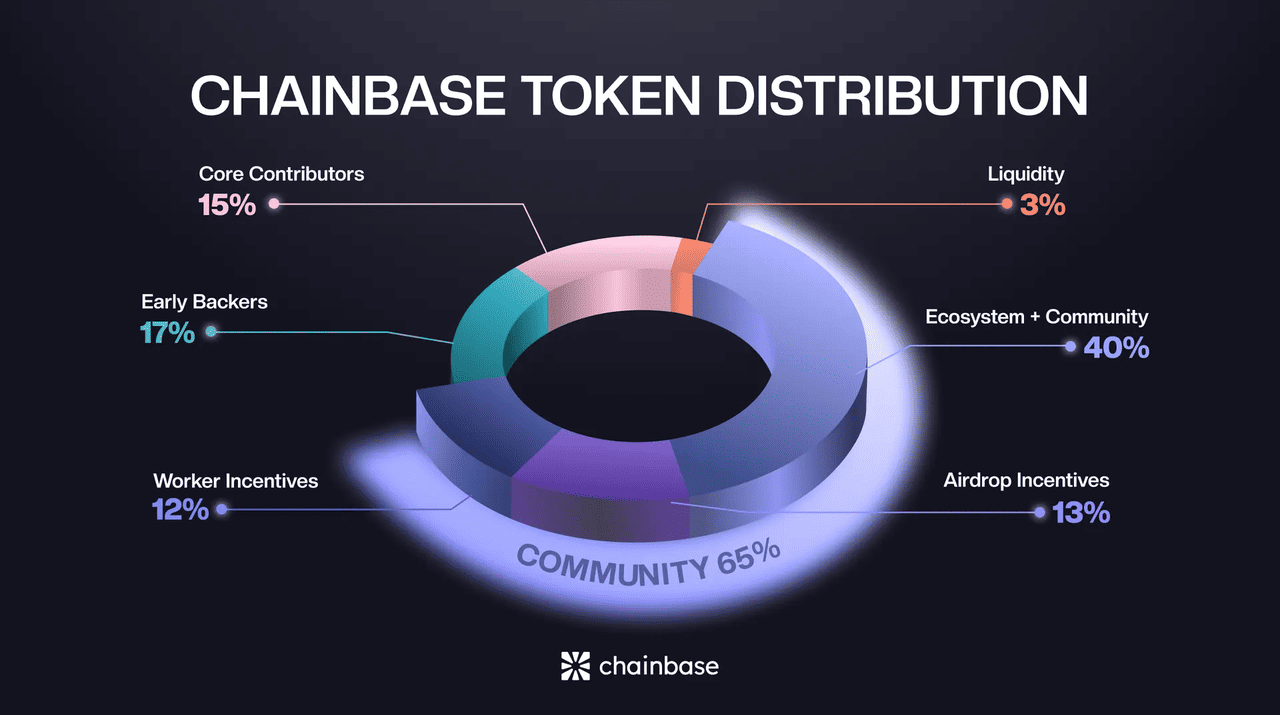Chainbase (C) is building the Hyperdata Network for
AI, transforming fragmented blockchain activity into structured, verifiable, and AI-ready datasets. With over 500 billion data calls, 200+ indexed blockchains, and 35,000 developers onboard, it’s laying the foundation for a DataFi economy. Backed by top-tier investors and a robust dual-chain architecture, Chainbase now rewards its early contributors through the Season 1 $C airdrop.
This guide explains what Chainbase is, how its $C token powers the ecosystem, and step-by-step instructions for claiming your Chainbase airdrop allocation.
What Is Chainbase Hyperdata Network and How Does It Work?
Chainbase is the world’s largest Hyperdata Network, purpose-built to bridge
blockchain technology and artificial intelligence (AI). It solves a critical bottleneck in AI development: access to structured, high-quality, and verifiable data. By transforming billions of raw onchain events into AI-ready datasets, Chainbase enables smarter, autonomous systems and decentralized applications.
The network acts as an “operating system” for onchain intelligence, supporting a new wave of
AI agents, dApps, and protocols that require real-time, composable data.
Key pillars of Chainbase network | Source: Chainbase litepaper
At its core, Chainbase comprises three foundational components:
1. Manuscript: A programmable layer that lets developers define how blockchain data should be structured and processed into useful formats. It allows creating reusable “data assets” that can be queried by applications.
2. AVS Layer: An Active Verification Service powered by over 600,000
ETH staked via
Eigenlayer, which ensures decentralized validation, execution, and security of data workflows.
3. Chainbase DA: A high-throughput
Data Availability layer designed for ultra-low latency and real-time composability. This ensures that AI models and applications can access verified data streams instantly.
This architecture powers a variety of use cases, including:
• Trading Bots: Algorithms that respond to live market behavior and user incentives.
• Autonomous dApps: Applications that learn and adapt based on user interactions across multiple chains.
• AI-Integrated Pipelines: Systems where machine learning models consume structured blockchain data directly.
Chainbase has processed over 500 billion transactions across 200+ blockchains, serving 240 million daily queries as of July 2025. With a growing community of 25,000 developers and over 24,000 integrated projects, it stands as a leading infrastructure for AI-ready blockchain data. It empowers developers, operators, validators, and delegators to build and maintain a permissionless data economy for AI and crypto applications.
What Is the Chainbase (C) Airdrop?
Source: Chainbase blog
The Chainbase
airdrop rewards early builders and community contributors who supported the Hyperdata Network’s launch. Season 1 allocates 3.5% of the total $C supply (out of 1 billion tokens) to eligible participants.
Breakdown of Season 1 Allocation
• 2% for Chainbase community and platform users.
• 1.5% for strategic partners, including Binance Wallet and OKX Wallet users.
This initiative recognizes meaningful contributions across development, data processing, and ecosystem engagement.
Who Is Eligible for the $C Airdrop?
Eligibility for Season 1 is based on a contribution scoring system that evaluates:
1. Community Contributions: Participation in campaigns, quests, and discussions.
2. Platform Usage: Paid usage of Chainbase APIs and data services.
3. AVS Operators: Running data nodes and contributing computational power.
4. Wallet Campaign Participants: Early adopters using partner wallets like OKX and Binance Wallet.
Each wallet address is assigned a score. Addresses meeting the minimum threshold qualify for the airdrop.
Chainbase Token Airdrop Snapshot and Key Dates
• July 14, 2025 (10:00 UTC): Airdrop eligibility checker goes live.
• July 14, 2025 (12:00 UTC): Claim phase begins.
• July 17, 2025: Exclusive 72-hour early claim window for OKX Wallet users.
• July 20, 2025: Claiming opens for all supported wallets.
• August 3, 2025: Claim window closes (14 days from start).
Unclaimed tokens will be staked in the Chainbase network, with yield returned to the community pool.
How to Check and Claim Your $C Tokens: A Step-by-Step Guide
Here’s a simple, beginner-friendly walkthrough to help you verify your eligibility and claim your Chainbase tokens securely.
1. Visit the Official Airdrop Portal: Open your browser and go to
airdrop.chainbase.com. This is the only official site for checking eligibility and claiming $C tokens. Always double-check the URL to
avoid phishing scams or fake portals.
2. Connect Your Wallet: On the portal homepage, click the “Connect Wallet” button. Choose from supported wallets like
MetaMask, Trust Wallet, or any
EVM-compatible wallet. Follow the prompts to securely link your wallet. This step lets the system scan your wallet address for contribution history and airdrop eligibility.
Source: Chainbase airdrop claim page
3. Check Eligibility: Once connected, the portal will automatically check your wallet’s onchain activity and display your airdrop score. If you qualify, it will show the number of $C tokens allocated to you based on your past participation, such as using Chainbase services, running AVS nodes, or joining community campaigns.
4. Claim Your $C Tokens: After the Token Generation Event (TGE), the claim button will be activated. Click “Claim” to start the process, then confirm the transaction in your connected wallet. Your allocated $C tokens will be transferred directly to your wallet within minutes.
5. Secure Your Tokens: Once received, secure your $C tokens properly. Beginners can keep their tokens in their connected wallet for ease of access. For active traders, consider transferring your $C tokens to an exchange like BingX, where you can trade them immediately. For long-term holders,
hardware wallets like
Ledger or Trezor offer enhanced security against hacks and phishing attempts.
What Is the $C Token Utility and Tokenomics?
The $C token powers the Chainbase Hyperdata Network by enabling secure data coordination, rewarding ecosystem participants, and facilitating governance. It is the central asset of the emerging DataFi economy, where structured blockchain data becomes tradable capital for AI and crypto applications.
Key Use Cases of Chainbase Token
C token reward structure | Source: Chainbase docs
1. Dataset Access: Apps, AI agents, and developers pay in $C to query and retrieve structured, AI-ready data sets published on the Chainbase network.
2. Ecosystem Incentives: $C tokens are distributed as rewards to developers (for writing Manuscripts), operators (for indexing and running computations), and delegators (for staking and supporting node operators).
3. Execution Security: Validators stake $C (and optionally ETH or LSTs) to help secure the Chainbase AVS layer. This ensures accurate data processing and reliable uptime across the network.
4. Governance: $C holders can vote on protocol upgrades, incentive structures, token allocation models, and ecosystem decisions, ensuring community-led development.
Chainbase Tokenomics Overview
$C token allocation | Source: Chainbase blog
Chainbase has a fixed total supply of 1 billion $C tokens, distributed as follows:
• Ecosystem & Community Growth – 40%: For grants, developer rewards, integration incentives, and long-term participation.
• Airdrop Incentives – 13%: Spread across three seasons to reward early users, contributors, and platform partners.
• Worker Incentives – 12%: For operators and infrastructure providers running data nodes and maintaining execution layers.
• Early Backers – 17%: Allocated to strategic investors and supporters with long-term vesting schedules.
• Core Contributors – 15%: Reserved for the founding team and protocol engineers who built the Chainbase network.
• Liquidity – 3%: Dedicated to exchange listings and ensuring healthy market dynamics.
What Can You Do With $C Tokens After Claiming?
After claiming, your $C tokens are fully transferable and can be traded on supported exchanges like BingX once they are listed. To trade on BingX, deposit your $C tokens into your BingX account by selecting the
C/USDT trading pair in the
Spot section. You can place a
Market order for instant execution or a Limit order to set your preferred price. This allows you to buy or sell $C with ease and access BingX’s
trading tools for market analysis.
Beyond trading, $C tokens can be used within the Chainbase ecosystem to unlock additional benefits. You can stake them to support network validators and operators, earning rewards while helping secure the Hyperdata Network. $C is also required for querying datasets, interacting with AI-ready data pipelines, and participating in protocol governance. Delegating your tokens to high-performing operators and validators further enhances network performance and offers a share of their incentives.
Final Word
Chainbase’s $C airdrop highlights the project’s commitment to rewarding early supporters and building a decentralized, AI-ready data economy. Its roadmap introduces DataFi applications, autonomous agents, and cross-chain interoperability, all powered by $C. With its robust infrastructure and strong ecosystem partnerships, Chainbase is emerging as a key player in this new data paradigm.
Eligible users should claim their tokens before August 3, 2025, and consider staying engaged for upcoming airdrop seasons and network developments. As with any cryptocurrency, the $C token may experience price volatility after listing. Always use official links for claims, verify wallet connections carefully, and assess your risk tolerance before deciding to trade, stake, or hold your tokens.
Related Reading






